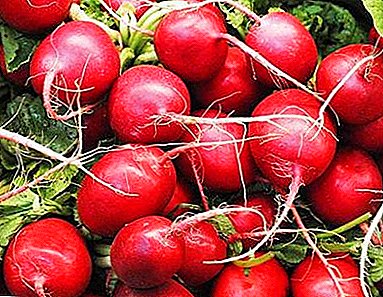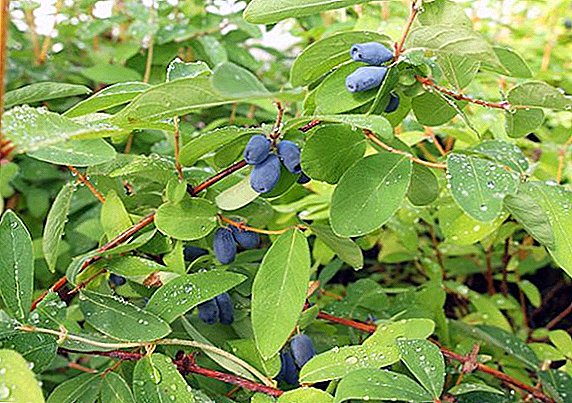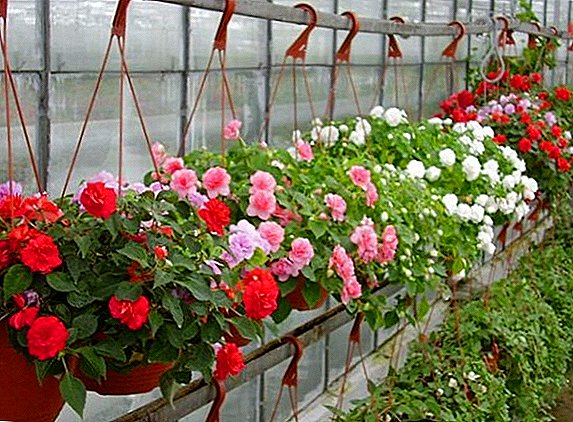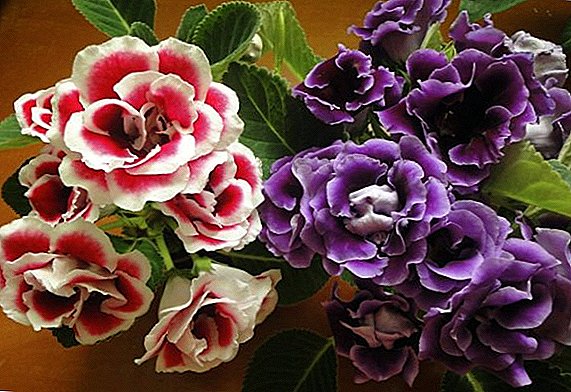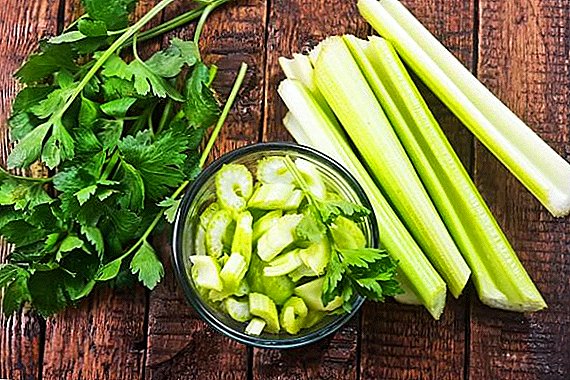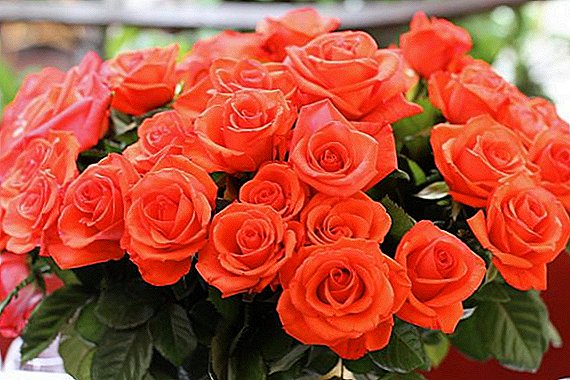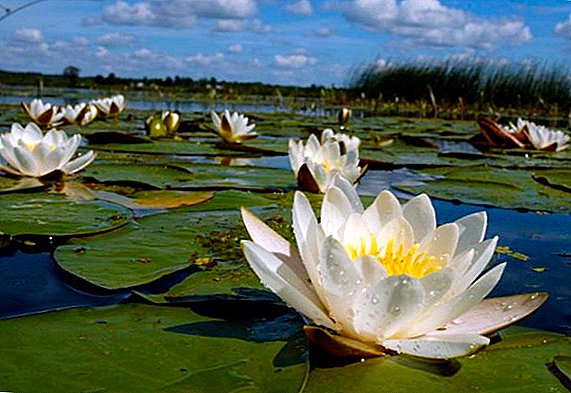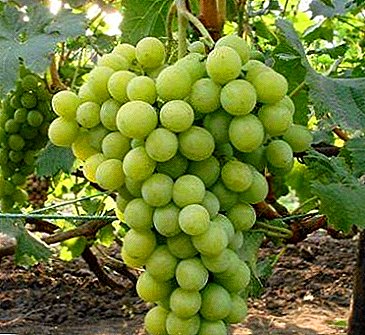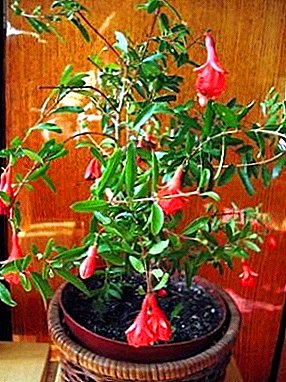
Pomegranate - deciduous shrub, belongs to the family Derbennikovs. It is also called punic or carthage apple. Homeland are considered the countries of the Mediterranean and Asia.
Baby pomegranate fell in love with flower growers due to its compactness, unpretentiousness, beauty and unique properties.
Its fruits are edible. They can be consumed fresh, cooked sauces or added when cooking meat and fish.
General description of the plant
 Baby grenade grows up 40-90 cm tall. It has small light green narrow leaves, about 3 cm. They are located opposite.
Baby grenade grows up 40-90 cm tall. It has small light green narrow leaves, about 3 cm. They are located opposite.
The surface of the sheet is glossy. In autumn, the foliage is yellowing, so the plant is preparing for wintering.
By winter, foliage can fall completely. Do not worry about this, because in the spring on the branches young leaves bloom.
The pomegranate baby also responds to stressful situations by dropping foliage. Therefore he needs to create most comfortable conditions.
Shrub begins to bloom in the first year of life. Flowering period - from May to September. The flowers are large, about 4 cm in diameter, bright red.
They can be single or collected 5-7 per bunch. One flower lives 2-3 day after which fade. Most inflorescences do not give fruit. For a hundred flowers can produce 3-4 fruit.
REFERENCE! To extend the flowering period, it is recommended to partially remove the fruit, leave no more than 2-3 pieces on the bush. Once every 3-4 years you can leave all the fruits.
Fruits grow small - about 5-7 see. Color can be from orange to deep red. The fruits are edible, but rarely eaten. They ripen In November.
You can visually familiarize yourself with the baby pomegranate in the photo below:


Home care
It is easy to care for a baby pomegranate. It is quite unpretentious, besides it is growing rapidly.
Care after purchase
 Room grenade after purchase must adapt to new conditions.
Room grenade after purchase must adapt to new conditions.
In order to get used to it as soon as possible, it is necessary to provide comfortable conditions.
First of all, a place is chosen for permanent growth. It should be well lit.
The lack of light affects the general condition.
Another prerequisite is the observance of temperature, it is impossible to prevent sudden drops.
The adaptation period can last. 1-3 of the week. After its completion, you can transplant a grenade into a new pot with prepared soil.
Pruning
The trimming procedure is best carried out in February, until the buds have blossomed. It is necessary to remove small young twigs, cutting off at an oblique angle. Thanks to pruning extra branches, branching is stimulated.
When pruning you need to be careful. Pomegranate twigs are different brittleness, you need to try not to damage the necessary shoots.
Watering
In winter, during rest, watering is reduced to a minimum. Enough once a month. In early spring, you need to gradually increase the amount of water. The top layer should be slightly moistened.
In the summer months, the soil should be moistened. regularly. It is necessary to monitor the state of the earth in a pot. Waterlogging or drying will adversely affect the condition of the shrub. Under stress, he can shed buds and leaves.
 After flowering, the plant needs abundant watering. Since the process of flowering and fruit ripening takes a lot of power from the plant, it needs to be fed.
After flowering, the plant needs abundant watering. Since the process of flowering and fruit ripening takes a lot of power from the plant, it needs to be fed.
In the summer months it is very important to spray the foliage. Water for this purpose must be at room temperature and must be separated.
Landing
Planting a pomegranate is necessary in the spring.
At home
For the correct development of grenades, baby should be planted in a pre-prepared soil. To do this in a ratio of 2: 1: 1: 1 is mixed:
- turf ground;
- leaf earth;
- sand;
- humus (peat);
Lay a drainage layer on the bottom of the pot consisting of expanded clay or crushed red brick.
In the garden
For the summer period, a pomegranate can be planted in the garden. The soil before planting needs to be prepared. It should be loose with good water permeability. To do this, sand, small sawdust and peat are mixed into garden soil.
Transfer
The young plant is subject to annual spring transplant. Upon reaching the age of three, this procedure can be carried out once per 2-3 of the year. When transplanting a new pot you need to take on 3-4 cm in diameter more the previous one.
Growing from seed
Consider how to grow room seed pomegranate baby.
Seeds for planting is desirable to buy in a store or trusted supplier. If the seeds are of high quality, the first flowers will appear in the year of planting, and the fruits - through 2 years.
You can try to grow a shrub from the seeds of the fruit. But the probability of emergence of shoots is very small. Seeds remain viable for up to 6 months. In April seeds are sown in seedling boxes to a depth of 0.5 cm.
 Seeds remain viable for up to 6 months. Seeds are sown in April in deep boxes 0.5 cm.
Seeds remain viable for up to 6 months. Seeds are sown in April in deep boxes 0.5 cm.
For planting the seed is mixed in equal proportions of sand and peat. Seed box covered with foil and left in a room with temperature 25-27 degrees Periodically, the film must be lifted for airing and watering.
After 10-14 days, the first shoots will appear. After the formation of 3-4 leaves, saplings are swooped in separate pots.
Breeding
Effective breeding method - grafting. In the summer, a woody twig with 5-6 buds is cut off and placed in a container with water or wet sand until the roots appear.
You can immediately land in the ground at an angle to a depth of 3 cm. Planted cutting is covered with a glass jar to maintain the required humidity. Through 2 months rooted cuttings are transplanted into permanent pots.
Temperature
In the summer, a favorable temperature is considered 20-24 degrees. At higher temperatures, the plant is sprayed regularly. In the autumn you need to reduce the temperature to 16-19 degrees. From November to February, the plant is hibernating. During this period, the temperature should be maintained within 10-12 degrees.
REFERENCE! Indoor garnet tolerates lowering the temperature to -5 degrees.
Lighting
Garnet - photophilous bush. You can place at the east, south or west windows. In the summer, it is advisable to take the plant pot to the balcony or loggia. the main thing protect from direct sun rays.
Benefit and harm
 All parts of the pomegranate, from roots to fruits, contain nutrients and are considered healing.
All parts of the pomegranate, from roots to fruits, contain nutrients and are considered healing.
Pomegranate is rich in organic acids, proteins, fats and carbohydrates. It also contains a large amount of vitamins and microelements, tannins and alkaloids.
Pomegranate juice has a tonic effect on the body. It is also a choleretic, anti-inflammatory and antipyretic agent.
Juice is used to improve appetite, replenish vitamins, rejuvenate the body.
Is forbidden eat people with stomach ulcers, pancreatitis and gastritis. And also not recommended for children under 2 years old and pregnant women.
Diseases and pests
An excess of moisture can lead to rotting of the roots, and a lack of - to drying and falling leaves. Also the plant can be affected. flail or spider mite. You can get rid of them with the help of a soap solution with a small addition of alcohol. In case of heavy damage, you can save only with the help of chemicals.
Baby pomegranate, with proper care, will not only be a decoration of the house, but also a doctor. There are many popular recipes for getting rid of various ailments. But the most pleasant thing is to be able to grow edible fruit on your window sill.


